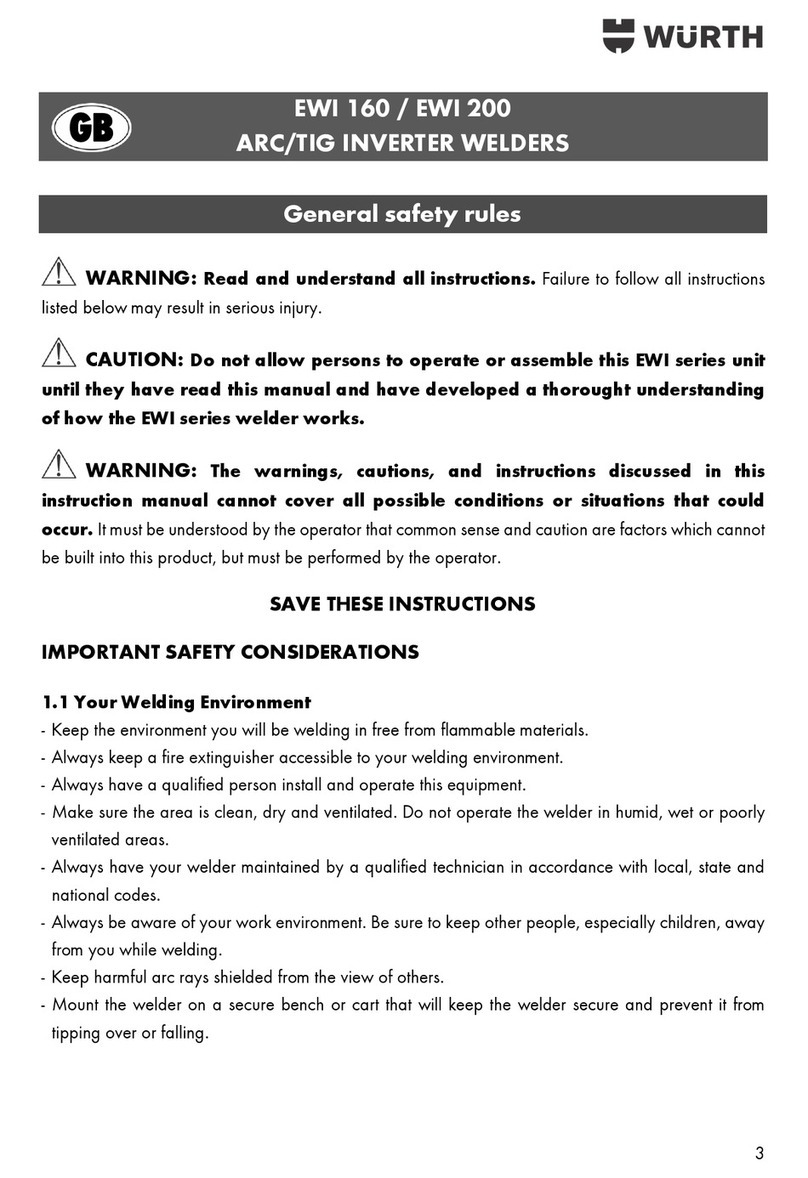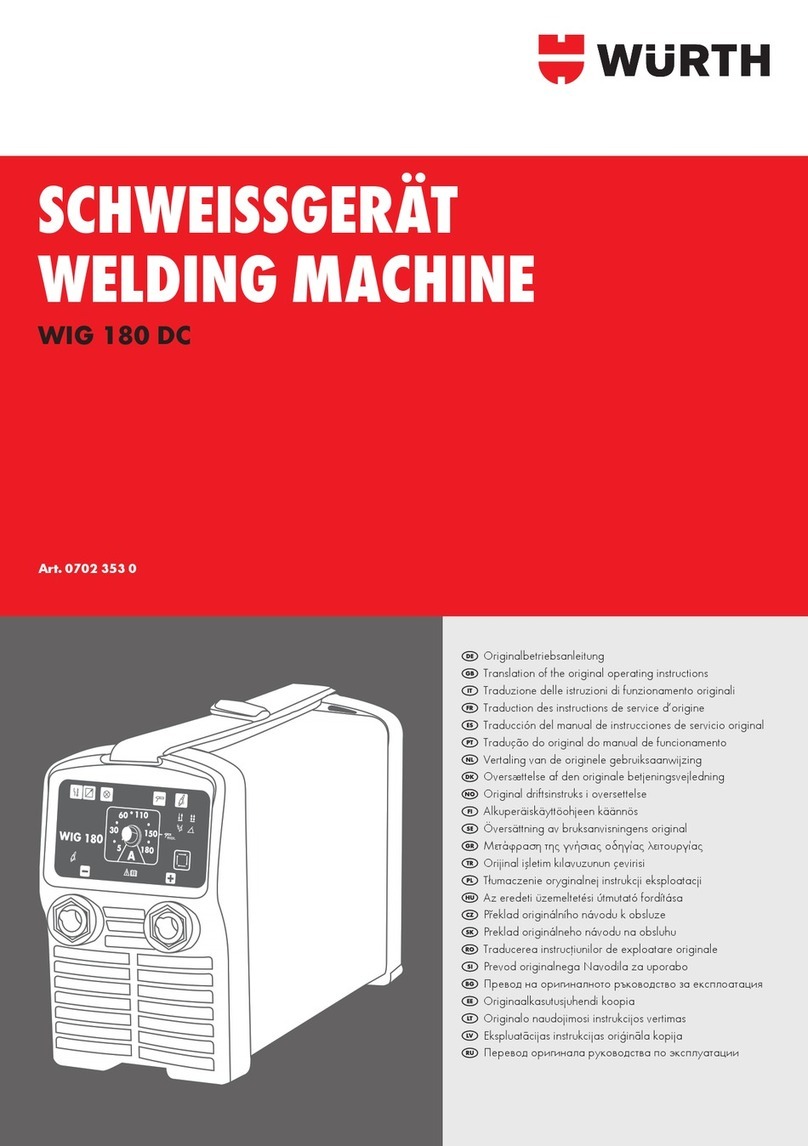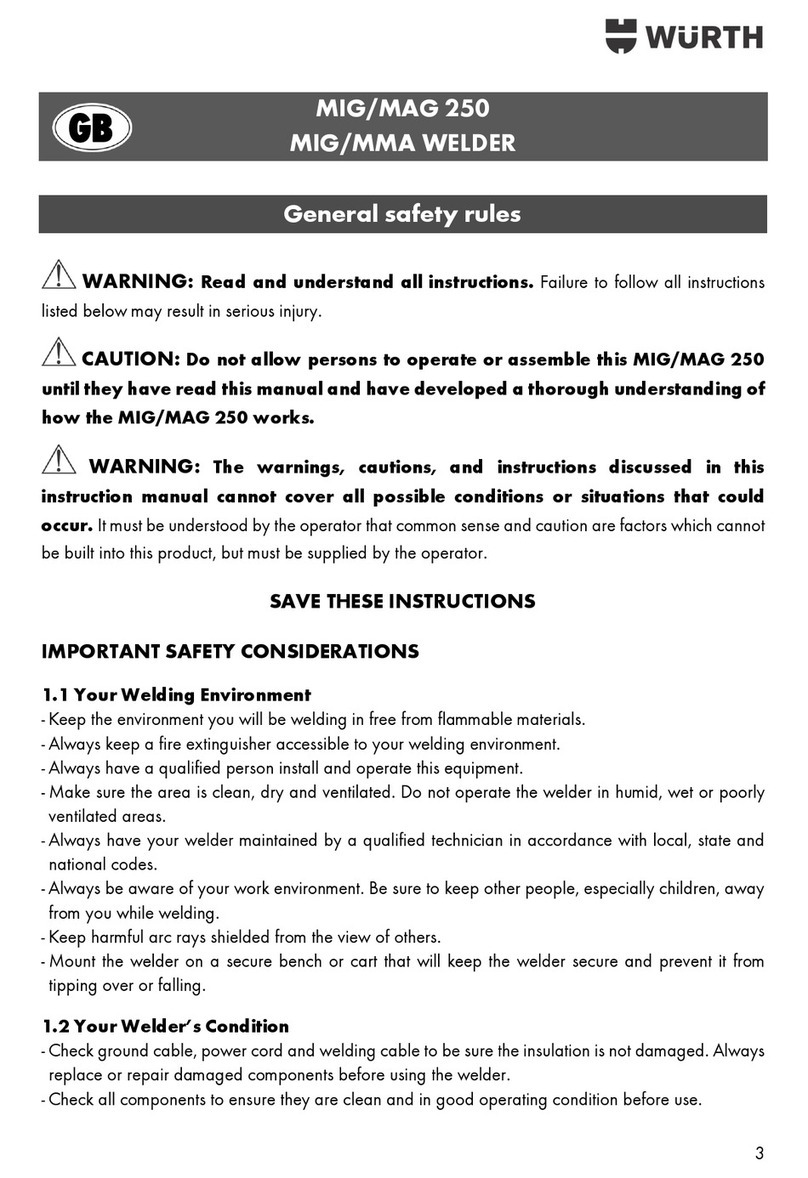Würth POWERCUT 70 User manual
Other Würth Welding System manuals

Würth
Würth TIG 200 pulse User manual

Würth
Würth PINPULLER SPOT User manual

Würth
Würth EWI 160 User manual

Würth
Würth MIG 350 SYN Quick guide

Würth
Würth WIG 180 DC Quick guide

Würth
Würth ESI 200 Quick guide

Würth
Würth master ESI 150 User manual

Würth
Würth MIG 180-5 User manual

Würth
Würth MIG/MAG 250 User manual

Würth
Würth WIG 180 DC User manual
Popular Welding System manuals by other brands

Hobart Welding Products
Hobart Welding Products AirForce 375 owner's manual

GF
GF MSA 330 instruction manual

Hakko Electronics
Hakko Electronics FX-888D instruction manual

Abicor Binzel
Abicor Binzel ABIPLAS WELD 100 W operating instructions

EWM
EWM Taurus 355 Basic TDM operating instructions

Thermal Dynamics
Thermal Dynamics PakMaster 100 XL plus operating manual
























